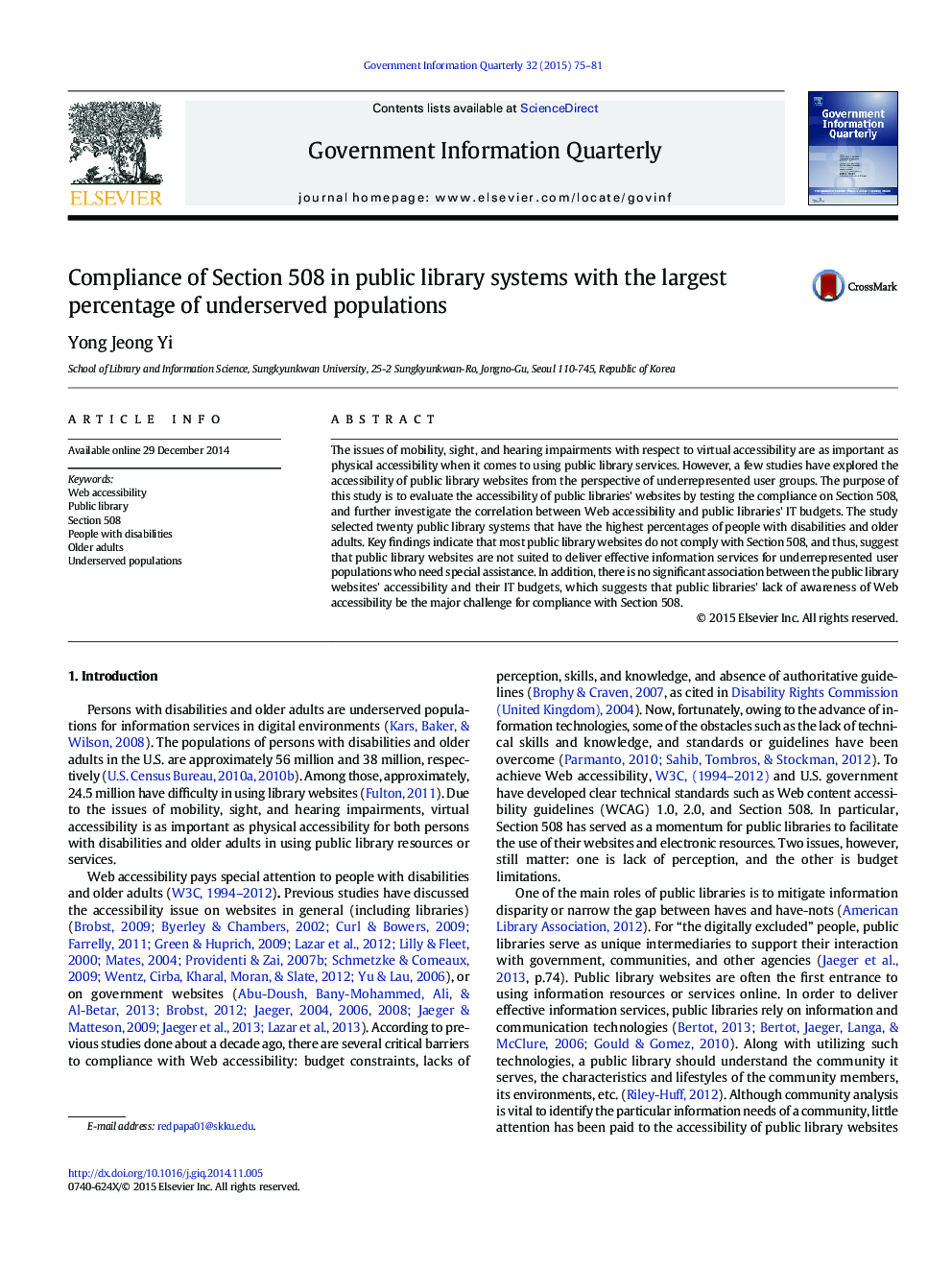| کد مقاله | کد نشریه | سال انتشار | مقاله انگلیسی | نسخه تمام متن |
|---|---|---|---|---|
| 1024368 | 941747 | 2015 | 7 صفحه PDF | دانلود رایگان |
• The public library systems with the largest percentage of underserved populations achieved very low accessibility.
• The public library websites indicated the highest compliance with the two guidelines about image maps of Section 508.
• State requirement for accessibility compliance had no effect on enforcing their libraries' Web accessibility.
• There was no significant association between the public library websites' accessibility and their IT budgets.
The issues of mobility, sight, and hearing impairments with respect to virtual accessibility are as important as physical accessibility when it comes to using public library services. However, a few studies have explored the accessibility of public library websites from the perspective of underrepresented user groups. The purpose of this study is to evaluate the accessibility of public libraries' websites by testing the compliance on Section 508, and further investigate the correlation between Web accessibility and public libraries' IT budgets. The study selected twenty public library systems that have the highest percentages of people with disabilities and older adults. Key findings indicate that most public library websites do not comply with Section 508, and thus, suggest that public library websites are not suited to deliver effective information services for underrepresented user populations who need special assistance. In addition, there is no significant association between the public library websites' accessibility and their IT budgets, which suggests that public libraries' lack of awareness of Web accessibility be the major challenge for compliance with Section 508.
Journal: Government Information Quarterly - Volume 32, Issue 1, January 2015, Pages 75–81
